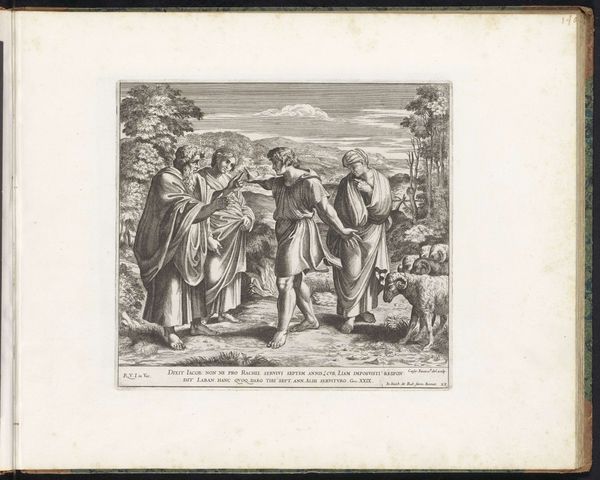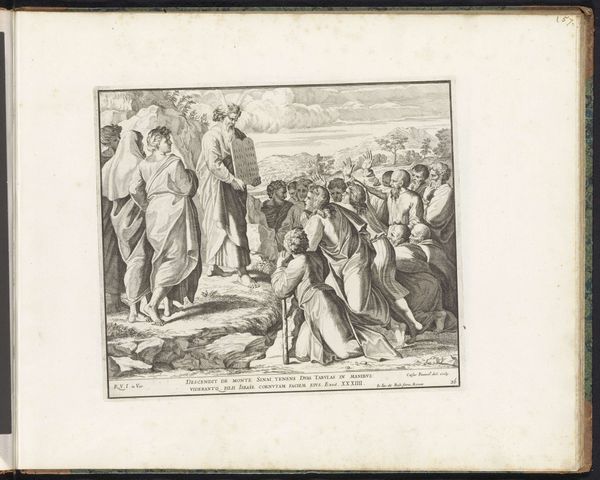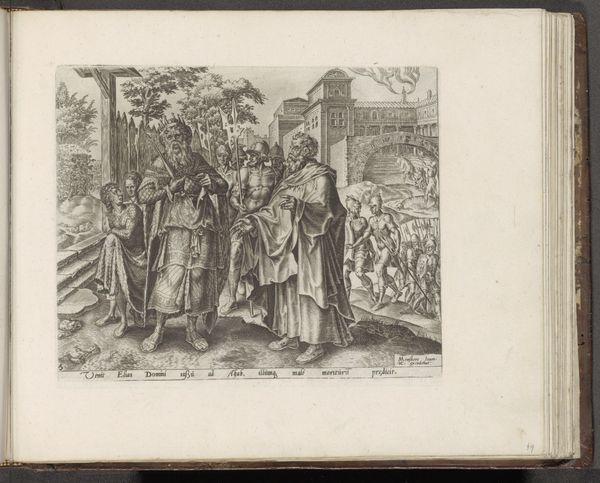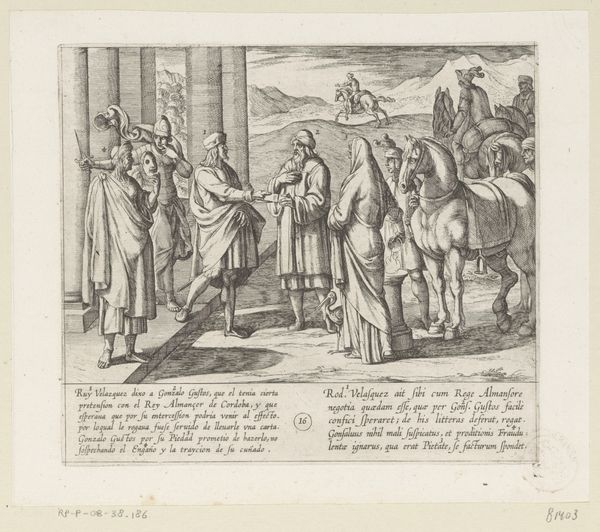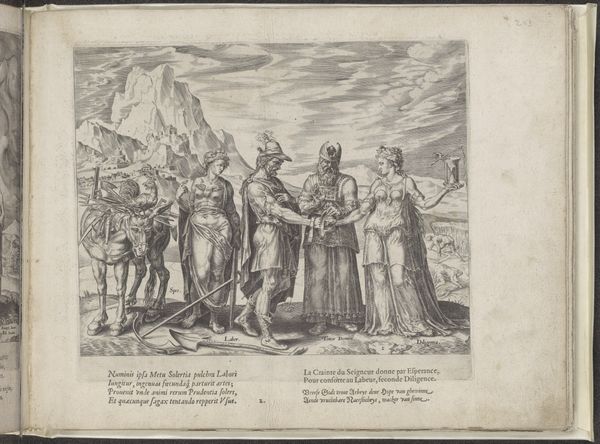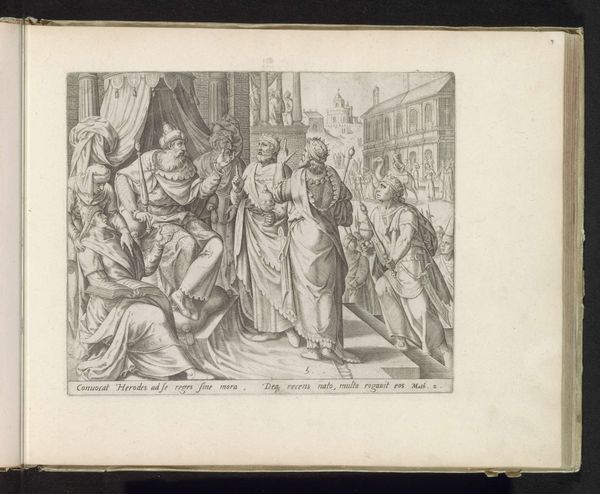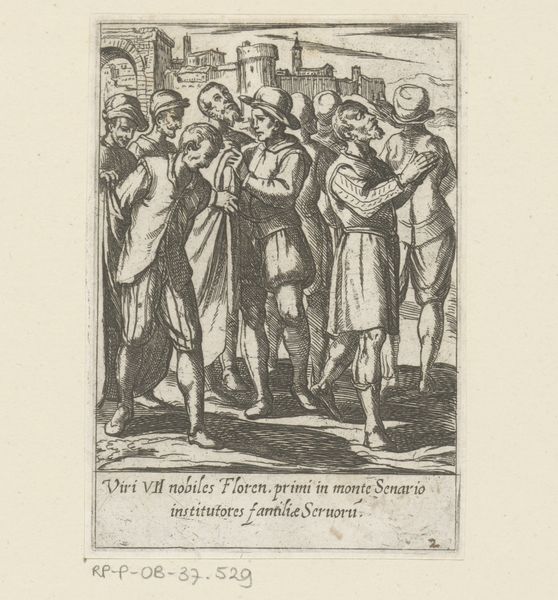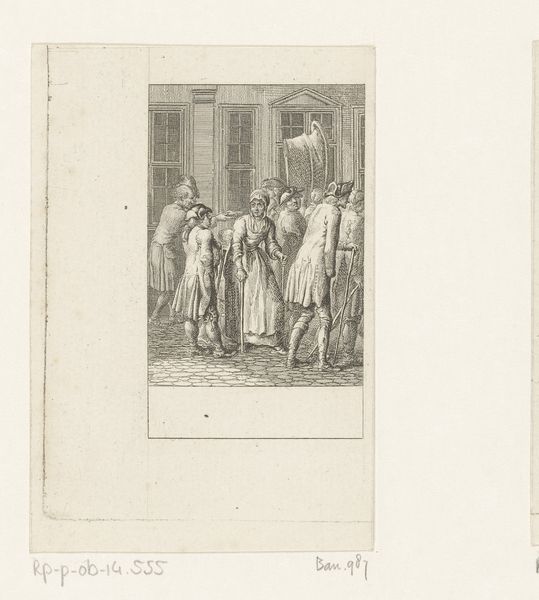
print, engraving
#
aged paper
#
medieval
#
narrative-art
#
parchment
# print
#
old engraving style
#
figuration
#
history-painting
#
engraving
Dimensions: height 117 mm, width 110 mm
Copyright: Rijks Museum: Open Domain
Curator: The scene unfolding here in the Rijksmuseum is a print titled "Prediking van Johannes Hus," dating roughly from 1620 to 1750, by an anonymous artist. It depicts the preaching of Jan Hus. Editor: My first impression is that it's incredibly detailed despite being a small engraving. The expressions of the crowd are fascinating; there’s a mix of deference and skepticism. Curator: It's crucial to remember that Jan Hus, a Czech theologian and philosopher, was a key figure in the pre-Reformation movement. He was later condemned as a heretic and burned at the stake in 1415. So, depicting him preaching centuries later certainly has its own statement. Editor: Absolutely, and the visual composition highlights that tension. Hus is elevated on what looks like a pulpit, yet he's surrounded by figures who appear skeptical, even hostile. What is more this is during the era of Reformation theology so the act of presenting him at all speaks of a critical positioning. Curator: This image taps into the Reformation’s use of printmaking as a tool of propaganda. Consider the politics of imagery during this time—the printing press allowed for wide distribution of Reformation ideology. Images could reach a much larger audience, regardless of literacy, solidifying visual representations of religious narratives. Editor: I find it so relevant to our present moment to understand how images create public opinion and support of political thought. There are complex semiotics on display in the clothing as well. Notice how some of the clothing is reminiscent of high religious office. It seems the artist wishes to show us all the stakeholders involved in Huss's role as an oppositional figure. Curator: Precisely! It also serves as an example of how historical events become mythologized through art. Hus, the historical figure, transforms into a symbol of resistance. Editor: The artist definitely employs this narrative with his detailed method and framing. What the artist frames becomes not merely representative but constitutive of Hus's image as a leader. Curator: And in thinking about contemporary theory, it underscores the continuous power struggle for narrative control, who gets to define historical memory and with what agendas. Editor: Seeing this reminds me to continuously analyze the ways that imagery shapes how we understand the power relations in our own lives. This small engraving has left me considering monumental issues.
Comments
No comments
Be the first to comment and join the conversation on the ultimate creative platform.

